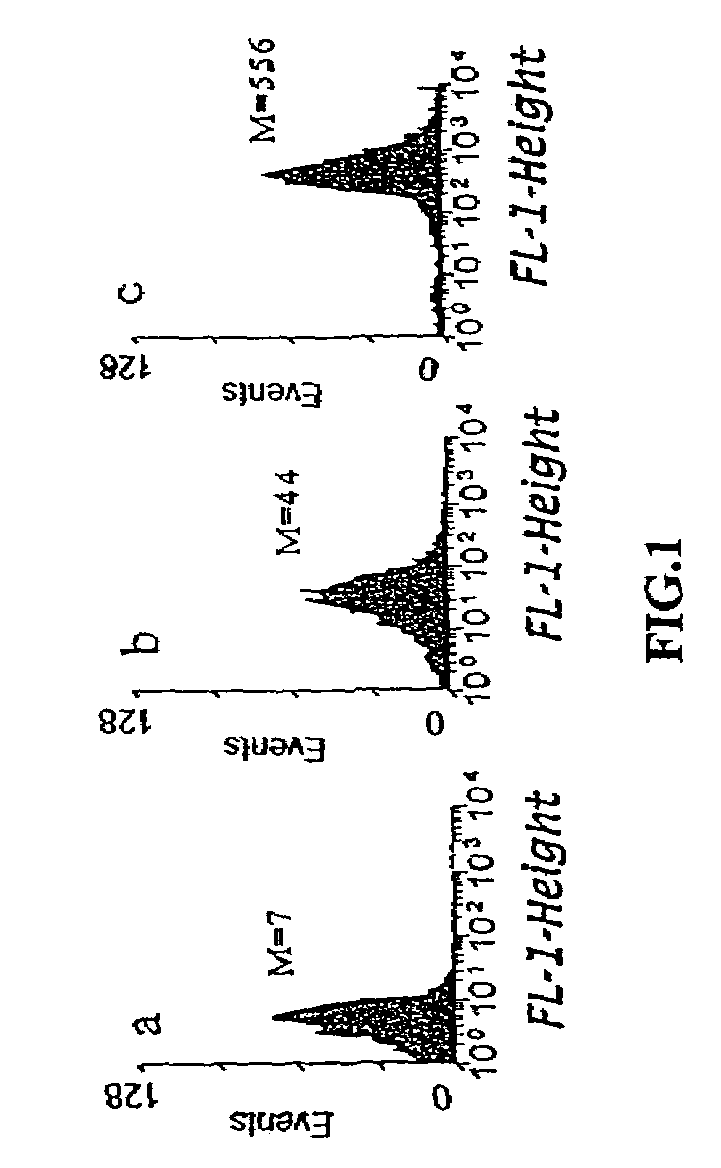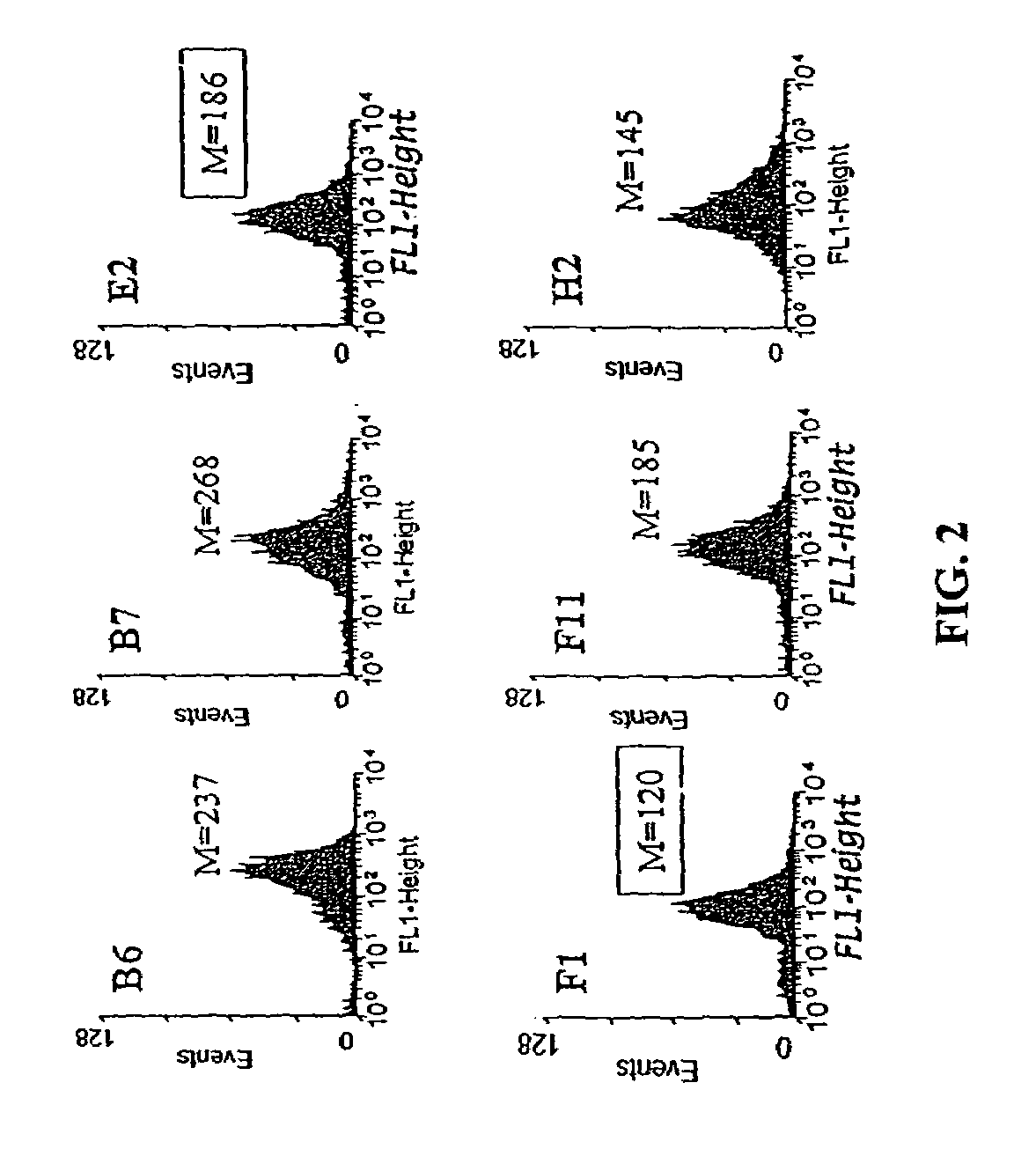Engineering of leader peptides for the secretion of recombinant proteins in bacteria
- Summary
- Abstract
- Description
- Claims
- Application Information
AI Technical Summary
Benefits of technology
Problems solved by technology
Method used
Image
Examples
example 1
Bioinformatics Search for TAT-Specific Leader Peptides
[0064]Putative TAT leader peptides were found using the Protein-Protein “BLAST” search engine available through the National Center for Biotechnology Information website. The following search strings were entered: SRRRFLK (SEQ ID NO:2), SRRXFLX (SEQ ID NO:3), TRRXFLX (SEQ ID NO:4), SRRXXLK (SEQ ID NO:5), SRRXXLA (SEQ ID NO:6), TRRXXLK (SEQ ID NO:7), TRRXXLA (SEQ ID NO:8), SRRXXLT (SEQ ID NO:9), SRRXXIK (SEQ ID NO:10), SRRXXIA (SEQ ID NO:11), SRRXFIX (SEQ ID NO:12), SRRXFMK (SEQ ID NO:13), SRRXFVK (SEQ ID NO:14), SRRXFVA (SEQ ID NO:15), SRRQFLK (SEQ ID NO:16), RRXFLA (SEQ ID NO:17), and RRXFLK (SEQ ID NO:18). Searches were done for short, nearly exact matches and then screened for only those matches occurring within the first 50 residues of the protein while still maintaining the twin-arginines. The first 100 residues of each leader peptide were then examined by “SignalP”, a program for detecting Sec pathway leader peptides and cl...
example 2
Bacterial Strains and Plasmids Construction
[0082]All strains and plasmids used in the following examples are listed in Table 5. E. coli strain XL1-Blue (recA1 endA1 gyrA96 thi-1 hsdR17 supE44 relA1 lac [F′ proAB laclqZΔM15Tn10 (Tetr)]) was used for all experiments unless otherwise noted. E. coli XL1-Blue tatB and XL1-Blue tatC were made using pFAT24 (Sargent et al. 1999) and pFAT166 (Bogsch et al, 1998) respectively according to established procedure (Bogsch et al., 1998). Strains were routinely grown aerobically at 37° C. on Luria-Bertani (LB) media and antibiotic supplements were at the following concentrations: ampicillin, 100 μg ml−1, chloramphenicol, 25 μg ml−1.
[0083]The plasmids constructed in the following examples were based on pBAD33 (Guzman et al., 1995) and were made using standard protocols Sambrook et al., 2000). Plasmid pGFP was constructed by cloning the GFPmut2 variant (Crameri et al., 1996) using the primers GFPXbaI (5′-GCGATGTCTAGAAGTAAAGG AGAAGAACTTTTCACT-3′, SEQ ...
example 3
Flow Cytometric Analysis
[0085]Overnight cultures of XL1-Blue cells harboring GFP-based plasmids were subcultured into fresh LB medium with chloramphenicol and induced with 0.2% arabinose in mid-exponential phase growth. After 6 h, cells were washed once with PBS and 5 μl washed cells were diluted into 1 ml PBS prior to analysis using a Becton-Dickinson FACSort.
PUM
| Property | Measurement | Unit |
|---|---|---|
| Fraction | aaaaa | aaaaa |
| Fraction | aaaaa | aaaaa |
| Fraction | aaaaa | aaaaa |
Abstract
Description
Claims
Application Information
 Login to View More
Login to View More - R&D
- Intellectual Property
- Life Sciences
- Materials
- Tech Scout
- Unparalleled Data Quality
- Higher Quality Content
- 60% Fewer Hallucinations
Browse by: Latest US Patents, China's latest patents, Technical Efficacy Thesaurus, Application Domain, Technology Topic, Popular Technical Reports.
© 2025 PatSnap. All rights reserved.Legal|Privacy policy|Modern Slavery Act Transparency Statement|Sitemap|About US| Contact US: help@patsnap.com



